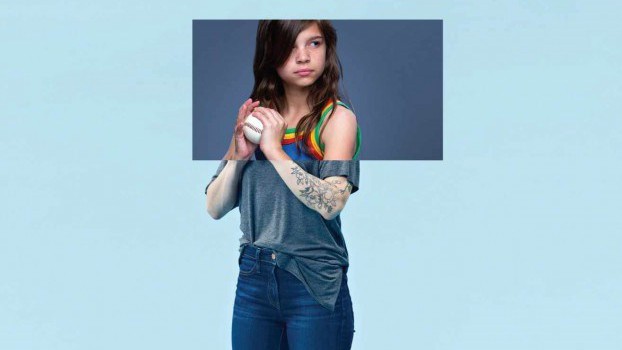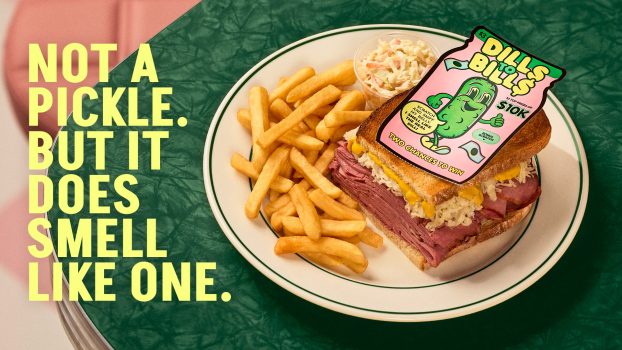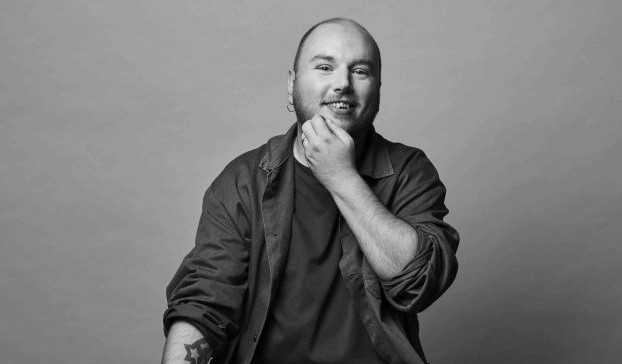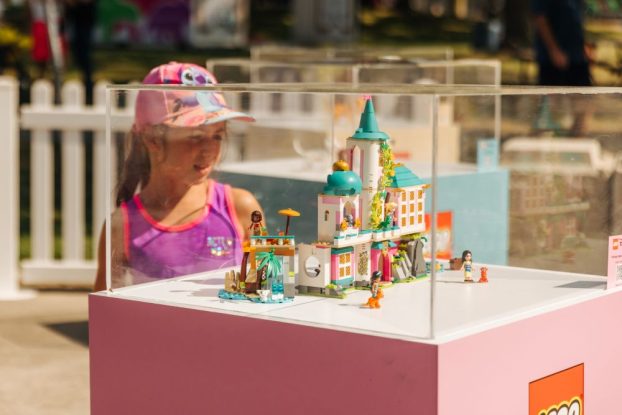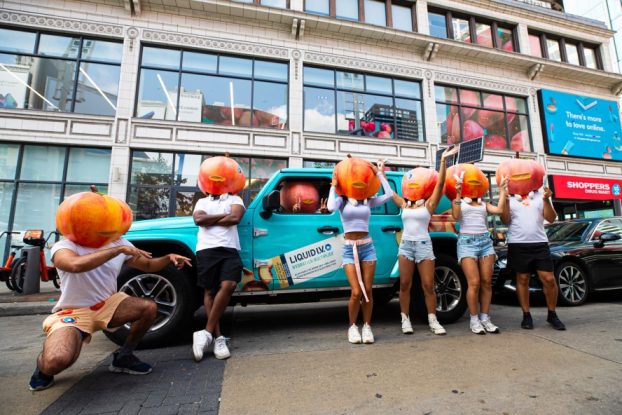John Molson was 22 years old when he arrived from Britain to set up a brewery in a new land back in 1786 – more than 80 years before Canada was a country. In his new home, he not only became a wildly successful entrepreneur but also a renowned philanthropist.
John’s business enterprises were not limited to his Montreal brewery. He built a hotel, Montreal’s first theatre and the first Canadian-made steamboat – the beginning of a fleet of 22. He also became the first exporter of Canadian-made spirits to England after establishing this country’s first industrial grain distillery. He died in 1836 at the age of 72, just as construction of his final project – the building of Canada’s first railroad – began.
Subsequent generations of the Molson family have continued to build on John’s vision, with ventures such as the Molson Bank in 1855, which operated under that name until a merger with the Bank of Montreal in 1925.
Throughout the years, Molson opened new brewery locations, introduced new brands of beer and ale, went public, created charitable foundations, acquired other brewers and became closely associated with hockey, auto racing and sports properties. And, of course, there’s the 2005 merger of equals with Adolph Coors Co. that made Molson Coors the fifth largest brewer in the world.
Molson has been a leader in beer advertising and marketing since 1807, when John Molson placed the brand’s first newspaper ad. It was also the first sponsor of the Soirée du hockey Molson on SRC, one of the longest running shows in history (1952-2004), and was on board for the longest stretch, from 1957 to 2004.
It was the first to use five-second TV spots (“Happy Canada Day” messages that ran in 2001) and then, of course, there was the famous “Joe Canada” ad, that spoke to the nation in a way that transcended advertising.
More recent innovations from Molson Coors include the 2009 launches of its first mobile app, the Coors Light Colder Than app for BlackBerry and iPhone, Rickard’s mobile couponing with Shark Club (which gave away a free pound of wings at the sports bar) and its location-based Beer Finder app.
All of this was accomplished while remaining mindful of the principles of a company founder who believed in social responsibility and keeping true to his vision of “brewing the best beer in the world for the people of Canada.”
The seventh generation of the Molson family is still actively involved in the business. Geoff Molson, now ambassador for Molson Coors Canada and a member of the board, was head of marketing in Quebec. Geoff was also a key driver behind recent innovations such as the development and marketing of Molson M, a chic Montreal-style beer that is full strength but with less carbonation. Andrew Molson, his brother, is now board chairman.
Molson Coors Canada president and CEO Dave Perkins sees this ongoing connection to the company’s roots as a great corporate asset. “There is a competitive advantage in family that is less about reinforcing our being Canadian, and more the care, quality concern and values that come with family involvement,” explains Perkins. “I think people generally look upon Molson as a company with a deep and rich heritage and history in Canada – and I think there is awareness that there is still meaningful family involvement.”
Perkins says the company’s merger with Adolph Coors Co. did not change any of that. Being Canadian, he says, is about attitude, heritage, deep involvement in the country – and all decisions for the Canadian business are made in Canada.
A 30-year Molson vet, Perkins progressed through the marketing and market research areas in Calgary, Montreal and Toronto before moving into general management. He migrated south in 2001 as president of Molson U.S. and stayed following the merger to run the international group, strategy and mergers/acquisitions.
In 2009, Perkins returned to Canada to lead a transformational agenda and has clearly made an impact in terms of increased market share over the past year as well as an increase in product launches.
“What I feel good about,” says Perkins, “is as I look at our portfolio of brands today, it feels broader, deeper and healthier than it did 12 months ago.”
While Molson Coors has introduced some strong extensions to some of its core brands in the past two years – Molson 67, Molson M, Rickard’s White and Rickard’s Dark, for example – the advertising drive tied to the 2010 Vancouver Olympics had a lot to do with its sales lift and the renewed popularity of its flagship brand.
Molson Canadian was relaunched during the opening ceremonies of the Olympics and Molson’s powerful ties with sports, and hockey in particularly, were really solidified by its Olympic sponsorship and the Molson Canadian Hockey House, the hospitality centre that welcomed hockey fans from around the world to the Games. Canadian’s 2010 media spend (up to November, as measured by Nielsen) was $8.3 million – 4.5 times higher than Labatt Blue’s, and that’s without factoring in the sponsorship spend. All things combined, by December 2010, market share of Canadian was up over its rival.
With each point representing millions of dollars, it’s easy to see why share battle is so hard fought. During the 1980s and ’90s, at the height of the beer wars that raged between Molson and Labatt, it was tough to discern which cultural icon – hockey or beer – was the most competitive.”
The beer wars encompassed an era of big-budget advertising and promotions that pitted the two brewers against each other as they vied for the attention of young adults and raced to be first to market with a quick succession of new product launches for dry, draft and ice beers. It was all about who could generate the most brand awareness and interest through a 30-second spot. Television was the battleground.
“The whole heightening of competition and focus on youth – where the volume drinkers were – can be closely correlated to the [evolving] regulatory market at the time,” says Dave Barbour, a former Molson marketer, who’s now retired.
Barbour was on the front lines during the early days of the beer wars between 1968 and 1987. He started in Calgary as advertising and sales promotion manager and moved through the ranks in Montreal and Toronto to become VP of marketing nationally. When he first joined Molson, regulations limited brewers to product advertising – primarily catchy tunes with lines about taste and quality.
Molson TV spots in the 1960s included a black and white classic featuring Guy Lombardo and his Royal Canadians big band performing the Molson Canadian song, “Molson Canadian. Its friendly sparkle greets the eye…Next time you’ve got a thirst for a lager bright and clear, drink Molson Canadian lager beer.” It was capped off with a super of the tagline, “It’s the friendly lager.”
In the early ’70s, Paul Anka performed a pop version of the song – by this time, it was in colour – with additional lyrics such as, “Just right for folks who know their beer…And if you know lager, you’ll agree it heads the list in brightness and quality.”
Barbour says by the time he moved to Toronto in the mid-’80s, the rules changed. Lifestyle campaigns were allowed, but once beer was introduced into the scenario no skilled activities or activities that were deemed dangerous – surfing or swimming, for example – could be shown. After the fun, then it was time to sit back and enjoy a Molson beer.
The timing couldn’t have been better. Research had shown that while Molson performed very well on a number of important scores, when it came to youth, Labatt was edging ahead.
“That drove us into the turning point for the brand in terms of its market share and image,” says Barbour. “That was the campaign I call the ‘rock video’ campaign. On one side, we had video that was very attractive to youth and on the other end we had lined up music that was holding on to the existing franchise, which was slightly older.”
The result of that “two birds with one stone” approach in 1985 was a breakthrough campaign featuring a series of quick-cut vignettes teamed with hit songs such as “Dancin’ in The Street.” A 1987 execution showed surfing and beach volleyball accompanied by classic tunes, “So Glad You Made It” and “Gimme Some Loving.” The tagline of this campaign: “The Taste That Will Stop You Cold.”
Molson Canadian acquired a cool, youthful image virtually overnight. Young adults were buying into it and results in the marketplace proved it. By the late 1980s, Molson Canadian surpassed Labatt Blue as the number one beer.
Barbour says the whole strategy had to be bigger than simply an ad campaign, so other initiatives included creating the Molson Indy in 1985 – a year after Labatt had been rejected trying to get a Formula One race to Toronto – and successfully acquiring all the rights and approvals needed to stage the event. “We tried to turn the whole thinking of the company around from the profile of the sales reps we looked for, management people we looked for, our ad agencies,” says Barbour. “Everybody knew where we were going. It was a broadly cast strategy, not just one campaign.”
The “rock video” campaign continued for about four years and as other campaigns followed, the strategy behind the flagship brand stayed focused on a core demographic of 19- to 24-year-olds.
From 1988 to 1992, Molson Canadian advertising continued with an irreverent tone, using classic rock ’n’ roll under the “What Beer’s All About” banner. This CASSIES-winning campaign doubled the brand’s share in the key Ontario market and increased its penetration of the core 19- to 24-year-old demo by 50 points.
In 1995, “I Am” positioning was introduced for Canadian, keeping the brand on top and once again winning a CASSIES award for increasing brand awareness and share of market.
“I Am” reached a crescendo in 2000 with “The Rant,” which appeared in cinemas and on TV, and included live performances by Joe Canada (actor Jeff Douglas) at hockey games. The campaign was phenomenally successful and although it only ran about six weeks, it continues to be talked about, copied and parodied to this day – most notably by Michael J. Fox during the closing ceremonies of the 2010 Vancouver Olympics.
In the mid-’90s, Molson had already taken its marketing activities online and was leading the way in demonstrating how to use this channel to connect with consumers. Sites were created for the company, the flagship and other brands in addition to its I Am Online web community. Molson broke new ground over Labour Day weekend 1995, as the first company to sponsor a live internet broadcast, airing its Metallica concert in Tuktoyaktuk, NWT. It was also one of the first CPG companies to win a Cyber Lion at Cannes, taking home two Golds in 1998.
Molson Coors has been connecting with consumers through social media since 2007. It’s a big component of its marketing activities and will continue to be during its 225th year. The Molson blog talks about employees and what they’re doing in the community, but consumers can also connect with Molson on Twitter and Facebook.
”During the 2010 Olympics, we went from 30,000 fans on our Facebook page to over 350,000 during the games,” says Ferg Devins, Molson Coors chief public affairs officer. “Today we’re well over 400,000.”
For Molson Coors the beer wars are now ancient history. Peter Nowlan, chief marketing officer, says it’s no longer two Canadian beer companies going head-to-head, the war is now global and the real enemy is not other brewers but marketers of wine and spirits. As a result, the target audience has broadened to include not just youth but the same generation that Molson was trying to reach 20 years ago: the baby boomers.
In the two years since Nowlan moved to Molson Coors, following 18 years of marketing packaged goods for Nabisco and Kraft, he says there has been more new product activity than any time in the past 15 years.
“What we’ve launched has been done mindful of the opportunity to lure those drinkers back from wine,” says Nowlan. “It’s about taking the blinders off and seeing the category more broadly, talking to wine and spirits drinkers – both men and women – from legal drinking age to 59.”
Nowlan has instituted an idea-based culture where each brand is organized around ideas that resonate with the target, for example Rickard’s Red being linked to food, flavour and beer recipes.
Molson research has shown that Canadians tend to underestimate the amount of calories that wine and spirits contain, so when Molson launched Molson Canadian 67 in late 2009, it was positioned to lure those drinkers back to beer. Advertising for the new brand focuses on how 67 stacks up calorie-wise against other beverage options such as wine, which has almost twice the calories, and mixed drinks that can have more than three times the calories of the new brew.
Molson M, billed as “the world’s only microcarbonated lager,” was launched first in Quebec in 2010 but will be rolled out to the rest of the country this year to appeal to beer drinkers with more sophisticated tastes.
Other new additions to the Molson portfolio include Keystone and Keystone Light early last year. An extension to the popular Rickard’s brand was introduced in 2009, Rickard’s Dark. It joined a label that began with Rickard’s Red in 1985, Rickard’s White, launched in 2008, Rickard’s Honey Brown and Rickard’s Pale Ale.
It hasn’t all been about new brands for Nowlan. He has also turned his attention to rejuvenating Molson’s heritage brands, beginning with the relaunch of Molson Canadian and its new “Made from Canada” positioning during the 2010 Olympics. The brand refresh includes modified packaging and design with a more natural red maple leaf and more confident red and blue wordmark. Molson Export – a brand that’s 108 years old – is also being relaunched with a positioning that will build on the heritage of the brand and John Molson.
During the beer wars there was a fair amount of sameness about the products, but today’s consumers are looking for genuine differences, says Nowlan, so there must be differentiation. “Molson Coors is focused on putting the consumer at the centre of everything we do. Going into 2011, we have a very ambitious set of consumer-based ideas,” says Nowlan. “What drives beer is excitement and news, and it’s up to us, the marketers, to attract them to the category.”
Perkins says Molson Coors is focused on changing perceptions around when beer should be consumed.
“Why is it that wine is a more suitable accompaniment for meals in so many people’s minds? That’s wrong. Why is it that at a black tie event waiters walk around with trays of wine instead of trays of beer? We need to change that. So you’ll see innovation and efforts from Molson Coors that broaden the amount of alcohol occasions that are relevant to beer.”
Perhaps as 2011 counts down to 2012, champagne will have some competition.
Molson’s anniversary gifts
Brewery founder John Molson was a prominent philanthropist in his day, known for his role in projects such as establishing Montreal’s first public hospital. His spirit of giving has been a guiding principle of the brewery’s corporate responsibility program for 225 years. It is also one of the foundations of the company’s anniversary year celebrations.
“We believe in the family – that a firm and real commitment to the communities within which we do business is extremely important,” says Geoff Molson, ambassador, Molson Coors Canada and member of the board of directors. “It explains our longevity in many ways, because we are a business, but we are a business that gives back as well.”
There are two Molson foundations that give back: the Molson Family Foundation and, for corporate giving, the Molson Coors Donation Fund. During this anniversary year, the Molson Coors Donation Fund has earmarked $2.25 million to donate to communities across the country, much of it in support of facilities and programs that encourage active lifestyles such as community centres, rinks and arenas.
Employees and the cities where Molson Coors has its businesses will also be a big part of the 2011 anniversary revels. Celebrations will take place in those locations and events include a contest that will bring consumers and employees from across the country to where it all started, the Montreal brewery.
Molson family members will also have a higher profile in 2011. Geoff Molson will travel to several cities to meet employees and community members, and to take part in the presentation of some of the larger donations.
As per Geoff Molson, it’s an opportunity to contextualize the company’s vision for stakeholders, with an eye to building on that heritage: “During our 225th birthday we will have many opportunities to talk about the importance of our history and how it has led us to who we are today. Hopefully it gives us another platform to talk about our future as well.”
Molson through the years
1786
Production begins at the Molson brewery on Sept. 1. John Molson launches with four brands: Strong Ale, Mild Ale, Table Beer and
Small Beer.
1800
Glass bottles are introduced. (Beer was previously only sold in barrels.)
1803
Molson Brewery starts a beer delivery service in Montreal, rather than selling right from the brewery.
1807
Molson Brewery publishes its first newspaper advertisement in Canadian Courant.
1820
Molson opens the first Canadian industrial grain distillery and is the first to export Canadian-made spirits to England. The distillery remains Canada’s largest until closing in 1866.
1855
The Molson Bank receives its charter and opens for business. In 1925, it merges with the Bank of Montreal.
1859
Molson opens a store at the Montreal brewery to sell directly to consumers rather than just pubs.
1902
A refrigeration system is installed, making year-round brewing possible.
1903
Molson Export launches.
1919
The Molson Percival Stadium opens at McGill, dedicated to Percival Molson, who perished in World War I.
1936
Molson Brewery celebrates its 150th anniversary by publishing an illustrated booklet.
1945
Molson becomes a public company.
1954
Molson Golden Ale launches.
1955
Official opening of the Toronto brewery, which produces Molson’s first lager, Crown and Anchor.
1957
Tom and Hartland Molson acquire the Canadian Arena, which includes the Montreal Forum and the Canadiens Hockey Club (Molsons later sell and buy back the Canadiens several times). Molson becomes co-sponsor of Hockey Night in Canada.
1958
Molson acquires Sick’s Brewery, enabling it to expand across the country with six breweries in Western Canada.
Hartland and Tom Molson set up the Molson Foundation (renamed the Molson Family Foundation in 1981). So far, it has dispersed over $120 million in grants.
1962
Molson acquires Newfoundland Brewery.
1970
A Montreal conference for young managers within the company kicks off the beginning of the focus on young adults in Molson’s marketing.
1974
Molson acquires Formosa Spring Brewery of Barrie, ON.
1978
The corporate Molson Coors Donation Fund (originally called the Molson Donation Fund) is created to support charities and not-for-profits. Approximately $55 million has been donated to date.
1983
Molson beers launch in the U.K.
1985
Molson gets approval for the first Molson Indy in Toronto.
1986
The brewer celebrates its 200th birthday with the opening of the John Molson Hospitality Centre, built on the site of the original brewery in Montreal. A time capsule is filled with items from employees across the country. Eric Molson tours all the breweries and thanks employees.
1989
The merger of Molson Limited and Carling O’Keefe Companies makes it the largest brewery in Canada and the fifth largest in North America.
The beerco launches Molson Special Dry, now Molson Dry, Canada’s first “dry” beer.
1991
Molson Excel, Canada’s first alcohol-free beer, launches.
1995
Molson becomes the first to sponsor a live internet broadcast when it airs the Metallica concert held for contest winners in Tuktoyaktuk, NWT.
“I Am Canadian” launches.
1997
Molson ties its portfolio together under the “What beer’s all about” umbrella.
1998
Export is relaunched around the tagline, “History in the making.”
2000
The iconic and much spoofed patriotic tirade “The Rant” catapults Joe Canada to fame and gives a mighty boost to Molson’s flagship Canadian brand.
2005
Merger of Molson and Coors: the new company becomes the fifth largest brewer in the world with over 14,000 employees.
2007
A new brewery opens in Moncton, N.B., supplying Atlantic Canada,
the northeastern U.S. and overseas.
Molson starts its first blog.
2008
Molson becomes an official supplier of the Vancouver 2010 Olympic Games.
2009
Brothers Geoff, Andrew and Justin Molson re-acquire the Montreal Canadiens and the Bell Centre.
Molson M, Canadian 67 and Rickard’s Dark launch.
2010
Keystone and Keystone Light are introduced to Canada, and Keystone Light becomes the Official Beer of NASCAR in Canada and the Official Beer of the NASCAR Canadian Tire Series.



